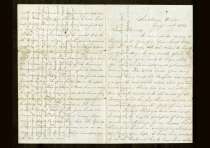
This beautiful small town became a Union supply base and, later, headquarters for Gen. William T. Sherman.
As a key supply base 1862-1865, La Grange suffered from Union occupation during the Civil War. After Federal occupation in 1862, LaGrange became the headquarters for Gen. William T. Sherman. In April 1863, Union Col. Benjamin Grierson left La Grange with a combination of cavalry and artillery on an extended raid deep into Mississippi to disrupt Confederate supply lines before the Union advance on Vicksburg.
In July 1864, Gen. Andrew J. Smith started from La Grange with another Union task force, which included Col. Edward Bouton’s brigade of U.S. Colored Troops, in a northern Mississippi campaign against Confederate forces that included the Battle of Tupelo on July 14, 1864.
Key historic buildings associated with La Grange’s Civil War story include: Woodlawn (built 1828), Sherman’s headquarters and a Union army hospital; Hancock Hall (built 1857), headquarters of Gen. Stephen Hurlbut, where Gen. Grant stayed during a visit; Immanuel Episcopal Church (built by slaves in 1842), used as a Union hospital after the battles of Shiloh and Corinth; and the Lucy Holcombe Pickens House, also known as Woodstock, the birthplace and early residence of Lucy Holcombe, wife of a Confederate ambassador, whose portrait appears on CSA currency.
Captain Henry Forbes, commander of Company B, Seventh Illinois Volunteer Cavalry in 1863 said that La Grange “was a neat little place of about a thousand people. The yards were beautifully improved, filled with evergreens and rare shrubberies. A fine college building crowned a gentle eminence to the east of the town and a Seminary for Ladies looked across it from the North. All is vulgar desolation now. The college and its twin buildings are used now for hospitals, and the churches are all appropriated to the same uses, with many of the private dwellings. The fences are all burned, the gardens trampled, the most elegant evergreens turned into hitching posts for Yankee horses, and all this in a town where there had been no strife of contending forces. It is a natural consequence of war."
Tools
Key Facts
- Key Union supply base from 1862-1865.
- Headquarters for Gen. William T. Sherman.
- Desolated by Union occupation.




